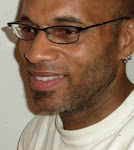 understanding. Certainly, we can discuss to ad nauseum what many artists deem the “necessity” to create. Don’t misunderstand me, I am not diminishing or downgrading this notion. Remember, I am a painter. Reality is that "living is expensive." Considering the costs, the staying alive, the anguish and loneliness associated in the creativity process, I’ve never been able to fully embrace this lofty and singular ideal of necessity. Amidst the darkness, uncertainty and cruel realities associated with
understanding. Certainly, we can discuss to ad nauseum what many artists deem the “necessity” to create. Don’t misunderstand me, I am not diminishing or downgrading this notion. Remember, I am a painter. Reality is that "living is expensive." Considering the costs, the staying alive, the anguish and loneliness associated in the creativity process, I’ve never been able to fully embrace this lofty and singular ideal of necessity. Amidst the darkness, uncertainty and cruel realities associated with  our craft, I have said myself, shouted at the top of my voice even, “Why am I doing this? This is crazy. I don’t get it!”
our craft, I have said myself, shouted at the top of my voice even, “Why am I doing this? This is crazy. I don’t get it!” Some paintings, for obvious reasons were created for specific purposes; political, historical, social protest, even religious. Hey, I understand the beauty of art, how it influences our lives and world; the value of its visual language. Don’t misunderstand me. I am not questioning the importance of paintings or
 painters. My attempts for some time have been to understand why and how our psyche endures the rigors and pain associated with the process.
painters. My attempts for some time have been to understand why and how our psyche endures the rigors and pain associated with the process. From where I’m sitting, as a way of making a living, it’s not a wise choice. Well, that is unless you are “called” into the profession. I can actually understand this perspective. Without this assurance, that your purpose, your very reason for living was to paint, despite what may come, the arduous and uphill journey seems ludicrous. Lured in only
 by the illusive romance of the craft, one is destined to experience the toil of Camus’ “Myth of Sisyphus.” Oh, there are the gifted, but they paint because they can.
by the illusive romance of the craft, one is destined to experience the toil of Camus’ “Myth of Sisyphus.” Oh, there are the gifted, but they paint because they can. Making art is not for part timers. It shows up in the results. The “Called” bring something extra to the table. There is a brilliance. Like Moses coming down from the mountain after his visit with God, scripture says his face shone with the glory of God. He had to veil his face for the brightness was too great. I understand painting as a calling. And a “calling” validates the notion of necessity. Like a leopard

can’t turn away from its spots, neither can the painter called to throw paint. That said, I understand the impetus behind Ober-Rae Starr Livingstone and his paintings. He is called. There is more, it is not quite that simple.
Often, this notion of calling is applied to those thought of as painters of religious themes. If we label Ober-Rae’s paintings as religious paintings, we lessen the experience while interfacing with his images. There are no crosses, no Christ pinned to the missing crosses, no blood or witnesses to the crucifixion. Ober- Rae appeals to the higher court of our consciousness, he appeals to our essence, the essential element of our human existence. Yet, we are nothing and invalid

without the existence of the creation first. Order is critical. The creation is a provision from the Creator. Ober-Rae’s imagery devoid of form and figure exaggerates the very importance of humankind. Why else highlight a creation without a creature?
Creating “high” art is for those seeking and searching for something greater than “Good Art.” This is not “Good Art.” He cares little for making good art. Ober-Rae’s commitment to the craft is grounded in a desire to share an insightful understanding; the Creator’s faithfulness and devotion to His Human Creation. The effectiveness of Ober-Rae’s calling, like that of a minister, requires he focus and point his efforts toward a specific and singular message. Looking back in the Old
 Testament on Moses, his singular message to Pharaoh was “let my people go.” Martin Luther King’s Civil Rights message of non-violence was “Let freedom ring.” Malcolm X declared it was “by any means necessary;” Ober-Rae, “The faithfulness of the Creator.”
Testament on Moses, his singular message to Pharaoh was “let my people go.” Martin Luther King’s Civil Rights message of non-violence was “Let freedom ring.” Malcolm X declared it was “by any means necessary;” Ober-Rae, “The faithfulness of the Creator.”Hanging in the Gallery right now are works by Tom Brady, a Philadelphia painter. A recent guest said they are wonderful paintings, yet they all look the same. The translated version, the reality of her comment is that Brady’s work is definitively Brady; his heavy impasto texture like that of a fingerprint. When you see a Brady painting, you know it is his. Ober-Rae, like Brady, can be identified by his work. His pointed message is clear.

